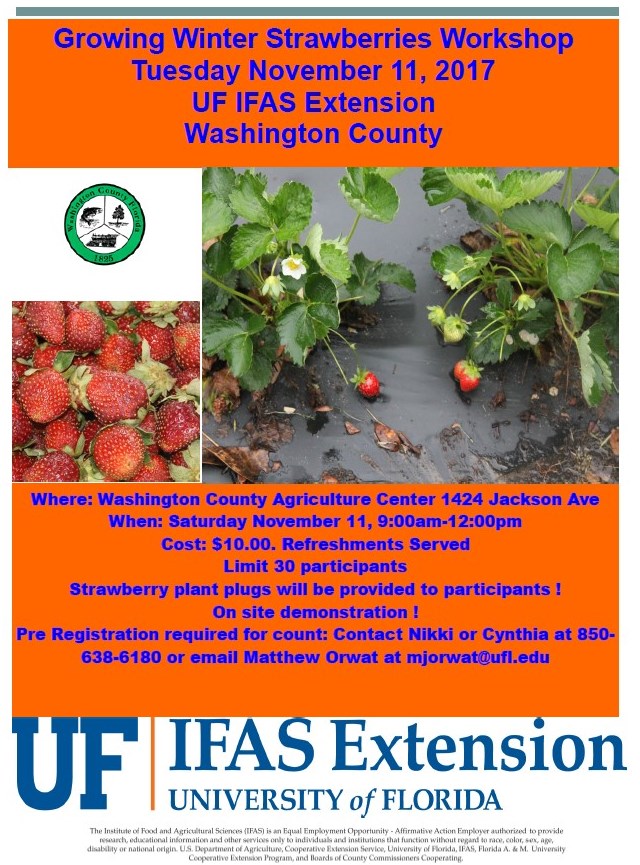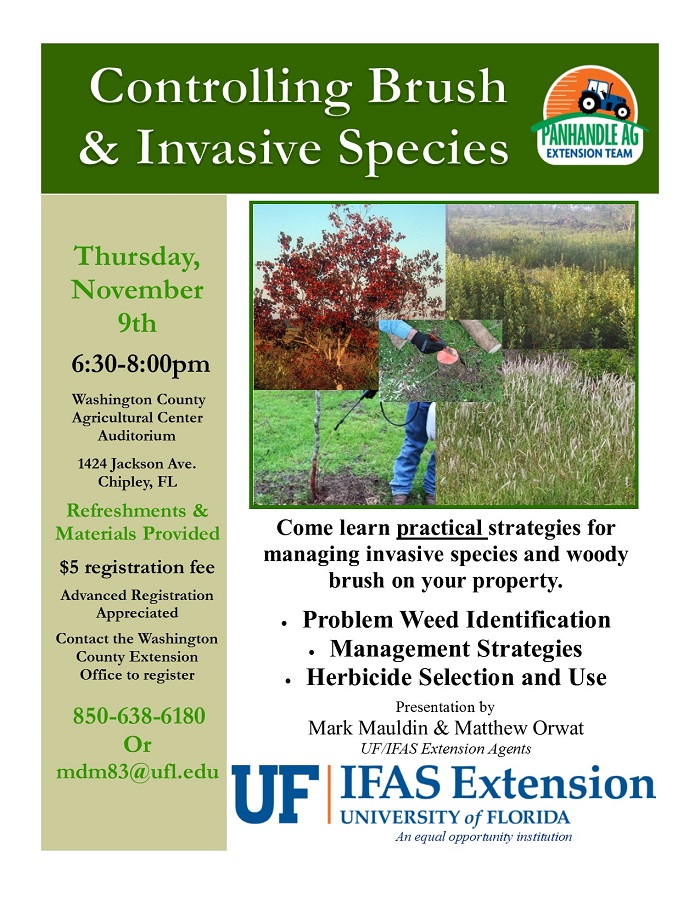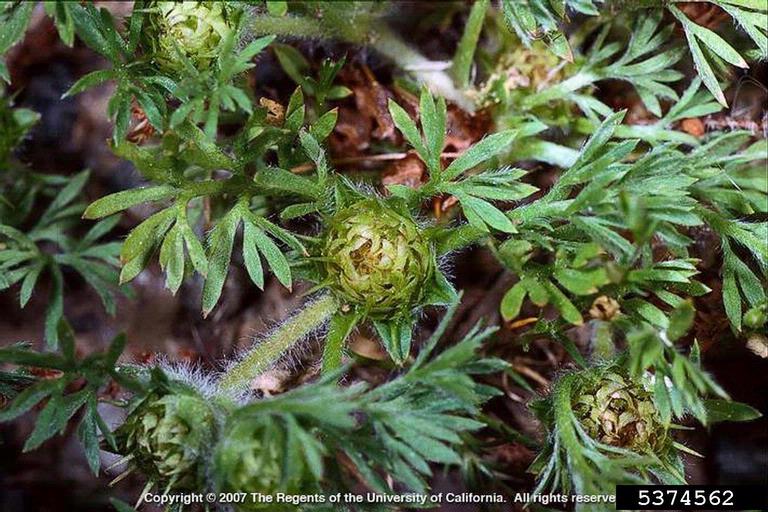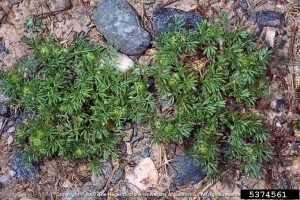
Happy Thanksgiving from your Gardening in the Panhandle Team !
Happy Thanksgiving from your Gardening in the Panhandle Team !


Where: Washington County Agriculture Center 1424 Jackson Ave
When: Saturday November 11, 9:00am-12:00pm
Cost: $10.00. Refreshments Served
Limit 30 participants
Strawberry plant plugs will be provided to participants !
On site demonstration !
Pre Registration required for count: Contact Nikki or Cynthia at 850-638-6180 or email Matthew Orwat at mjorwat@ufl.edu
Now is the time for Northwest Florida gardeners to plant strawberries for bountiful production of fruit beginning in January and continuing into May. The following procedure will lead to a successful strawberry garden if followed:
The best location for strawberry production provides well-drained, moist, sandy soil with substantial organic matter. It must not be too wet. A fertilizer scheme of 2 lbs of a 6-8-8 fertilizer per 100 sq ft should be broadcasted over the plot, and spaded or disked in. Prepare the bed by leveling out the soil. Commonly, a preferred system is the development of a hill system, which entails making a raised bed 6-8 inches high and 24 inches wide. A raised bed can be filled with well-rotted compost mixed at a 50:50 rate with soil. After bed preparation, provide another application of fertilizer in a single, narrowband in the middle of the bed, 4 to 8 inches deep, but DO NOT apply fertilizer directly below the plants, as the fertilizer may burn the young transplants. Do not use fertilizer with more than 6% nitrogen on strawberries, so that they have less chance of burning and greater chance of setting sweet, quality fruit.
Short day, certified disease free plants for Florida such as Sweet Charlie and Camarosa should be purchased from a reputable nursery.
If growing the plants using plastic mulch or grow fabric, put drip irrigation underneath in the form of drip emitters or bubbler type soaker hose.
When setting out the transplants:
For best results, strawberries should be mulched. Black polyethylene plastic mulch at 1 to 1½ mil thick is best (completely cover the top and sides of bed before planting). Be sure the bed is firm, formed correctly, moist, and fertilized adequately. Place soil on the edges of the plastic to hold it in place. Cut slits in the plastic for the transplants.
When using alternatives like straw, bark or other natural organic materials mulch to a depth of 1 to 2 inches, but do not completely cover the plant.

Encroaching brush, whether native or invasive, can be a problem for properties large and small. Fighting woody brush and other hard-to-kill weed species can be challenging for property owners. Many factors affect the effectiveness and efficiency of control efforts.
Timing of the application is a key factor that many property owners fail to consider. The cooler, fall and winter months are an excellent time to control a wide variety of troublesome brush species. With this in mind, the Washington County Extension Agents will be presenting a class, Controlling Brush & Invasive Species on November 9, 2017. The class will focus on plant identification and specific chemical control strategies that are effective in the fall and winter months. Herbicide selection and application techniques will be addressed in detail.
Controlling Brush & Invasive Species will be held at the Washington County Agricultural Center (1424 Jackson Ave., Chipley, FL) on Thursday, November 9, 2017 at 6:30 in the evening. Refreshments and printed reference materials will provided. There is a $5 registration fee for the class, payable at the door. Advanced registration for the class is appreciated. If you have questions or would like to register please contact Mark Mauldin at the Washington County Extension Office (850-638-6180 or mdm83@ufl.edu).


Burweed, Soliva Sessilis. – Image Credit: Joseph M. DiTomaso, University of California – Davis, Bugwood.org. Creative Commons License
On the top of my list of lawn related annoyances is stepping into a patch of burweed, Soliva sessilis, which is in the sunflower family and is also known as spurweed. The leaves are opposite along the stem and sometimes resemble parsley. The main ways in which burweed can irk the casual gardener are sticking to socks, sneaking in with the dog, or littering flower beds with its nuisance. It can also hide in the house and reappear when shoes are removed. This causes pain in both the foot and the ear.
Lawn burweed has been an especially noticeable problem in lawns. Over the years, extension offices throughout Northwest Florida have been fielding many questions and finding solutions to lawn burweed infestations!
Maintaining a healthy vigorous lawn will prevent weeds from taking over. If your lawn is reasonably healthy and only a few instances of this weed exist, try to mechanically remove them and encourage the lawn to outgrow them.
If an infestation of burweed occurred last year on a specific patch of turf, take note. The best time to apply pre-emergent herbicides to control burweed is in October, when nighttime temperatures drop to between 55-60 degrees F for a few consecutive nights. A widely used pre-emergence product for burweed control is isoxaben, which is sold under the brand name of Gallery as well as others. It prevents the weed from emerging from the ground when it germinates and can be used on St. Augustine, centipede, bahia and zoysia lawns, as well as in ornamental shrub beds. In northwest Florida, this herbicide needs to be applied in October for best results. A second application later in the season might be warranted. For more information about control, please consult this excellent article on lawn burweed management.
Now is the time to control burweed before it gets started. As temperatures cool burweed seed will germinate, as it is a winter annual. In cases where it is already coming up, control with post-emergent herbicide may be warranted.
The active ingredients mentioned above are present in a variety of ‘trade name’ products* available from your local garden center, farm supply or co-op. Be sure to read label instructions carefully and contact your local extension office for any assistance. I hope all the northwest Florida lawn managers prevent burweed this fall so that lawns will be burweed free next spring.
Happy Gardening!
Avid horticulturists often get frustrated when attractive, floriferous, versatile, durable, and easy-to-grow plants get sidelined because they have been declared an invasive species. Ruellia simplex (commonly known as Mexican petunia) was declared a category 1 invasive in 2001 by the Florida Exotic Pest Plant Council, described as “a plant that is altering native plant communities by displacing native species, changing community structures or ecological functions, or hybridizing with natives” (Source: UF/IFAS Center for Aquatic and Invasive Plants).
It produces copious amounts of seed year-long, which do not require exposure to cold weather (stratification) or mechanical damage (scarification) to germinate. Its excellent garden characteristics such as prolific flower production, and adaptability to varying light, temperature and moisture levels also increase its invasive potential.
Fortunately, recent developments in the field of plant breeding have developed several sterile Ruellia cultivars that have demonstrated low invasive potential in field trials. UF / IFAS researchers have developed the MayanTM series, which includes four distinct new cultivars: ‘MayanTM White’, ‘MayanTM Pink’, ‘MayanTM White’ and’ MayanTM Compact Purple’. They are available to the public through various licensed nurseries.
This spring, UF/IFAS Extension agents were given the opportunity to try MayanTM Series Ruellia at their local offices. I opted to try the ‘MayanTM Compact Purple’ cultivar and so far it has been an excellent landscape plant. It is shorter than other Ruellia cultivars and has adequate branching throughout so as to not look leggy. It blooms regularly and flowers have a nice, purple hue. It does not mind full morning sun but benefits from afternoon shade, particularly during the hot summer months. So far, it seems like an excellent selection for plant borders or areas where a durable source of color is needed. Additionally, it produces no fruit and very little viable pollen, so it does not have potential to hybridize with naturalized Ruellia simplex populations.
Although this is a sterile selection, it can still multiply by rhizomes. While I have not observed any invasive behavior in ‘MayanTM Compact Purple’, I have just tested it in one location.
For more information consult this article from Florida Foundation Seed Producers and one from Hort Science on the ‘MayanTM Compact Purple’ cultivar.